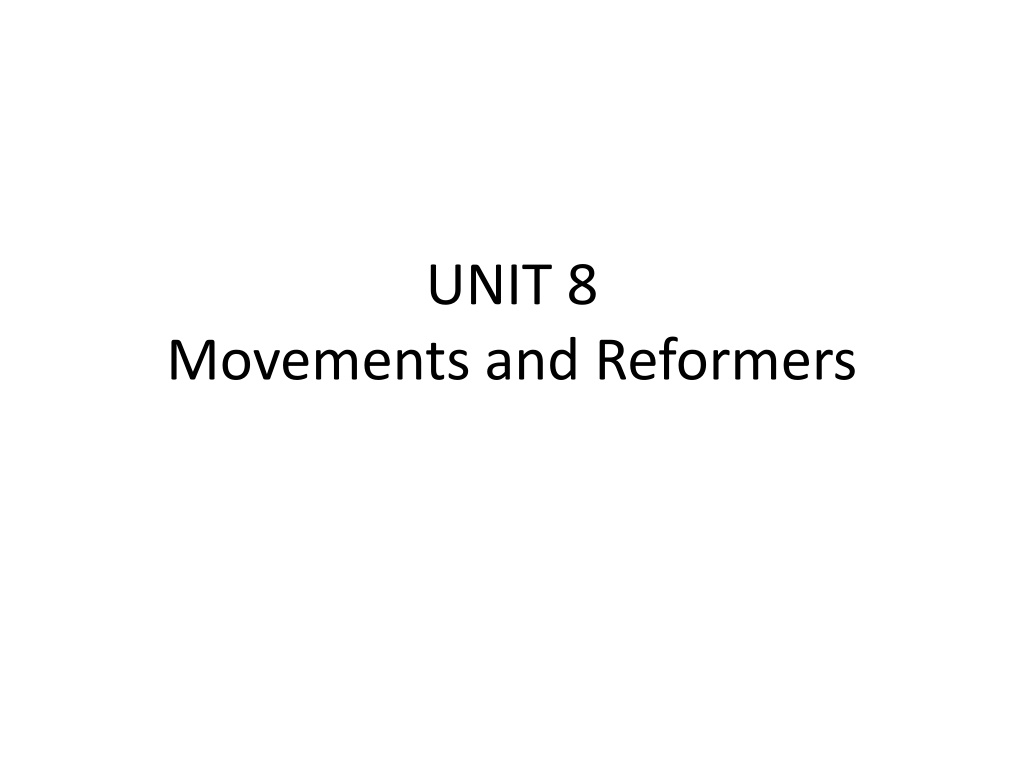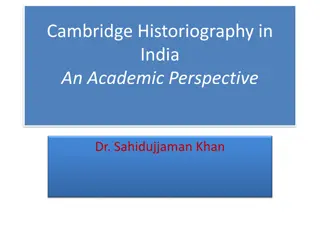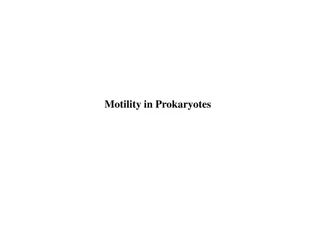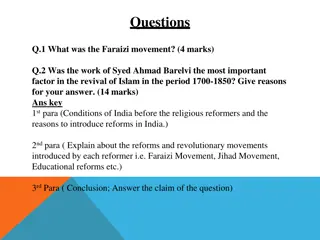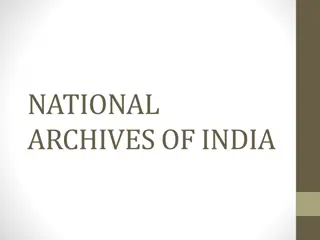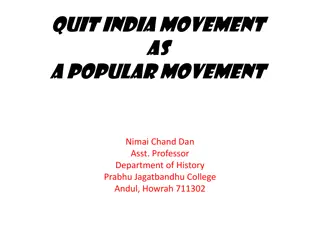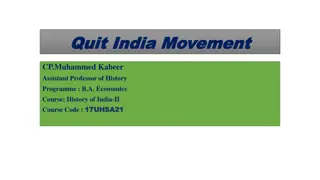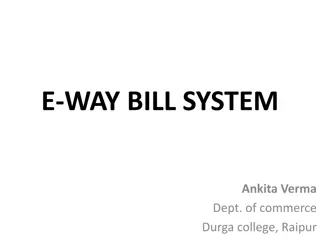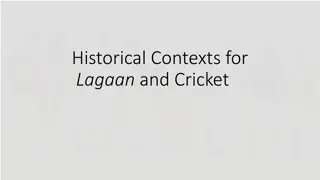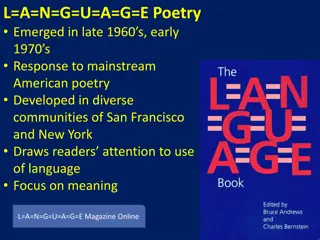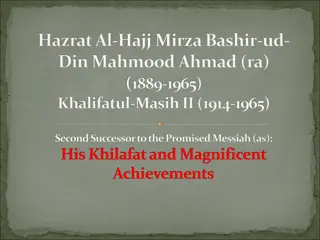Khilafat Movement in India: A Historical Perspective
The Khilafat Movement was a significant event in Indian political history, triggered by the British not fulfilling promises made to protect Turkey during World War I. The movement aimed to safeguard Turkey's holy places, restore its territories, and revive the Ottoman Empire. Despite efforts, including delegations to England, the movement ultimately faced challenges and setbacks.
Download Presentation

Please find below an Image/Link to download the presentation.
The content on the website is provided AS IS for your information and personal use only. It may not be sold, licensed, or shared on other websites without obtaining consent from the author.If you encounter any issues during the download, it is possible that the publisher has removed the file from their server.
You are allowed to download the files provided on this website for personal or commercial use, subject to the condition that they are used lawfully. All files are the property of their respective owners.
The content on the website is provided AS IS for your information and personal use only. It may not be sold, licensed, or shared on other websites without obtaining consent from the author.
E N D
Presentation Transcript
UNIT 8 Movements and Reformers
Khilafat Movement The Khilafat movement was a very important event in the political history of India. The Muslims of India had a great regard for the Khilafat (Caliphate). During World War I, the (Turkey) joined the war in favour of Germany. But Turkey and Germany lost the war and a pact commonly known as Istanbul Accord was concluded between the Allied Forces on 3rdNovember 1918. According to this Pact the territories of Turkey were to be divided among France, Greece and Britain.
CONT During the war the Indian Muslims were in a very awkward position, because they had a deep-rooted devotion to the caliphate. They had profound respect for this holy institution. Therefore, their support to the British Government was subject to the safeguard and protection of the holy places of Turkey and on the condition that Turkey will not to be deprived of its territories.
CONT But the British Government could not fulfill both of these promises. The Treaty of Savers 1920 was imposed on Turkey and its territories like Samarna, Thrace and Anatolia were wrested from it and distributed among European countries. A wave of anger swept across the Muslim World and the Indian Muslims rose against the British Government. Muslim leaders like Maulana Abdul Kalam Azad, Moulana Muhammad Ali Johar, Moulana Shoukat Ali and others reacted against the British Government policy and were put behind the bars.
Aims of this movement Thus, Muslims organized a mass movement, which came to be known as Khilafat Movement. The aims of this movement were: (a) To protect the Holy place of Turkey (b) To restore the Territories of Turkey (c) To restore the Ottoman Empire.
CONT In December 1919 both the Khilafat Committee and Congress held their meetings simultaneously at Amritsar and a delegation was prepared which was sent to England under the leadership of Maulana Mohammad Ali Johar to see the British Prime Minister, Cabinet Member and Members of Parliament and to explain the Indian point of view regarding the Khilafat.
CONT The delegation visited England in 1920. The leaders of the delegation addressed the House of Commons and saw the British Prime Minister. The delegation stayed at London for eight months and won many hearts and sympathies of people in Britain delivering speeches. However, the delegation returned to India unsuccessful in October 1920.
CONT After the unsuccessful visit to England the leaders of Khilafat Movement realized the fact that British were not in the mood to help them. Therefore, they realized that a new strategy needed to be adopted in order to reinvigorate the zest and zeal for freedom among a general populace. With this aim they decided to launch a movement of Non Co- operation.
CONT When the leaders of Khilafat movement announced the Non Co-operation Movement, the Congress extended its full support to the Khilafat Movement. The leaders of the two met at Amritsar and resolved to launch a country wide agitation under the leadership of Mr. Gandhi. The agitation was against the British government. The Jamiat-ul-Ulama Hind issued a Fatwa of Tark-e-Mawalat.
CONT The following points were included in it: 1. Renunciation of all Government titles. 2. Boycott of legislature and court. 3. Withdrawal of student s from educational institutions. 4. Resignation from government posts. 5. General civil disobedience.
CONT As a result of this proclamation of fatwa, hundreds of thousands people returned the titles and stopped sending their children to government schools and colleges. All those highly educated young men who could have rose to high government positions bade farewell to their bright future and accepted ordinary jobs in the private sector. The vacuum created in government offices was joyfully filled in by Hindus, while the Muslim government employees willingly accepted starvation for the sake of the Muslim cause.
CONT Under the hypnotism of Mr. Gandhi, Muslim ulama had issued a verdict and declared India as Dar-ul-Harab and the Muslims therefore needed to migrate to some other country or Dar-ul-Salam. Thousands of families sold out their properties for a tenth of their value and hastily left for Afghanistan, in August 1920. As many as eighteen thousand people marched towards Afghanistan, which was unable to bear the influx of the people.
CONT Thus, the Afghan authorities closed their frontiers. Eventually the Muhajarins had to return to their homes. A great number of old man, women and children died on their way during returning to homes and those who luckily reach alive their former places. They found themselves homeless and penniless. In fact they faced great difficulties. Even the preachers of Khilafat Movement realized the fact.
CONT In January 1921, nearly three thousands students of various colleges and schools boycotted their classes and a number of teachers most of them were Muslims tendered their resignation. The Movement became so powerful that the Government was obliged to pay attention to the problem. The British Government invited Seth Jan-Muhammad Chutani, the President of Khilafat conference to visit London to discuss the issue. A delegation under his leadership visited London and discussed the sentiment of Muslims but the delegation also returned unsuccessfully.
CONT The Khilafat Movement came to an end when thousands of Indians were put behind the bar. The leaders in spite of their best efforts could not maintain the Hindu-Muslim Unity. One of the main reasons which caused a death blow to Khilafat Movement was the indirect announcement of Gandhi to discontinue the Non Co-operation Movement.
CONT Gandhi used an incident of arson on February 1922, when a violent mob set on fire a police choki at Chora Churi at district Gorakpur, burning twenty one constables to death as an excuse to call off the non-cooperation movement. It adversely affected the Khilafat Movement which thought to be integral part of movement.
CONT In 1924, Kamal Ataturk set up a government on democratic basis in Turkey by abolishing Khilafat as a system of government which served a finishing blow to Khilafat Movement in India and people had lost whatever interest that they had in the movement.
Nawab Salimullah Khwaja Salimullah, Nawab of Dhaka, Muslim nationalist, an architect of the All Indian Muslim League, was born at the Ahsan Manzil on 7thJune, 1871. He was the son of Nawab Khwaja Ahsanullah and grandson of Nawab Khwaja Abdul Ghani. He was a patron of education and learnt Urdu, Arabic, Persian and English at home.
CONT He entered government service as a Deputy Magistrate in 1893, but left the job of Magistrate in 1895. Then he started business. After his father s death in 1901, Salimullah, as the eldest surviving son, become the head of the Dhaka Nawab estate and inherited the hereditary title Nawab . His name is still a house hold word in Bangladesh
CONT Nawab Salimullah got involved in politics in 1903-1904 by the way of giving opinion on the government s plan for the partition of Bengal. His contribution to Muslim politics in India was most noteworthy. It was he who was called upon to move the first Resolution at the inaugural Session of the All India Muslim League held in Dhaka on 30 December 1906.
CONT Nawab Salimullah Bahadur as one of the prime founder members of the Muslim League Lighted a candle that burnt undimmed till the dream of Muslim renascence found its fullest and most concrete expression in the birth of Pakistan.
Nawab Mohsinul Malik Nawab Mohsin-ul-Mulk was born on 9th December 1837 in the town of Etawah, a part of United Provinces. He was the son of Syed Mir Zaamin Ali. He got his early education in and around Etawah. He was given the education of Persian and Arabic. He participated in Aligarh and he was also included in those people who were founder of All India Muslim League.
CONT In 1867, he topped in the Provincial Civil Service examination. He was elected for Deputy Collector in U.P. He proceeded to Hyderabad into the service of the Nizam in 1874. Due to his twenty years service he got titles of Munir Nawaz Jang and Nawab Mohsin-ul-Daula by the Nizam of Hyderabad.
CONT Mohsin-ul-Mulk met Sir Syed Ahmad Khan when he was posted as Tahsildar in Etawah. He became a strong supporter of Sir Syed Ahmad Khan s vision and the Aligarh Movement. In 1864 he became member of the Scientific Society. In order to support Sir Syed vision and Aligarh Movement he started writing articles in Tahzeebul Akhlaq.
CONT On the death of Sir Syed, in 1899 he was appointed as the Secretary of the Muslim Educational Conference. He died in Simla on 16th October 1907.
Nawab Waqar-ul-Mulk Nawab Waqar-ul-Mulk was born on 24 March 1841, in Meerut. His real name was Mushtaq Hussain. He was one of the founders All India League. He was a famous Muslim politician. He was self made man. He did his engineering from Engineering College Roorki. He was Law secretary in the government of Hyderabad State Deccan and later joined Revenues department.
CONT He was appointed as Governor of Wararangle (newly established state), to due his effort the state became very prosperous. Government of Hyderabad gave him the title of Nawab Intezar Jung. Then he was appointed as Revenue Secretary with the order of Nizam of Deccan. He served as Personal Secretary and adviser to the Prime Minister Nawab Bashiral Daulla and became the Deputy Prime Minister of Hyderabad.
CONT He was conferred the title of Nawab Viqar-ul- Mulk on 9 December 1890.He also remained a member of Scientific Society since 1866. He was also known for his involvement in Aligarh Movement.
CONT Nawab Viqar-ul-Mulk joined the M.A.O. College in October 1892 in Aligarh. Nawab Viqar-ul-Mulk, Sir Agha Khan, Sir Shafi and Nawab Salim-ul-Khan organized a Mohammedan Educational Conference in December 1906.On the same occasion they also launched a new party called All India Muslim League. He was appointed as Honorary Secretary of M.A.O College in 1907.
CONT Government of India in 1908, gave him the title of Nawab.It was his magnetizing personality which had induced Quaid-e-Azam to join the All India Muslim League. Due to his bad health, Waqar-ul-Mulk gave up the Secretary ship of Aligarh in 1912.Due to illness he died on 27 January, 1917.
